Joseph Stalin
Episode #2 of the course Deadliest dictators in history
Joseph Stalin (1878–1953), born Joseph Dzhugashvili, was the leader of the Soviet Union for nearly 30 years. He was integral in establishing the international political landscape of the 20th century through to the modern day. He helped Russia gain freedom from centuries of feudal oppression and establish a new social order. His “favorite” daughter remembered him as a stern father full of pride for his country. In addition, Stalin’s policies and political military leadership resulted in the deaths of as many as 30 million people.
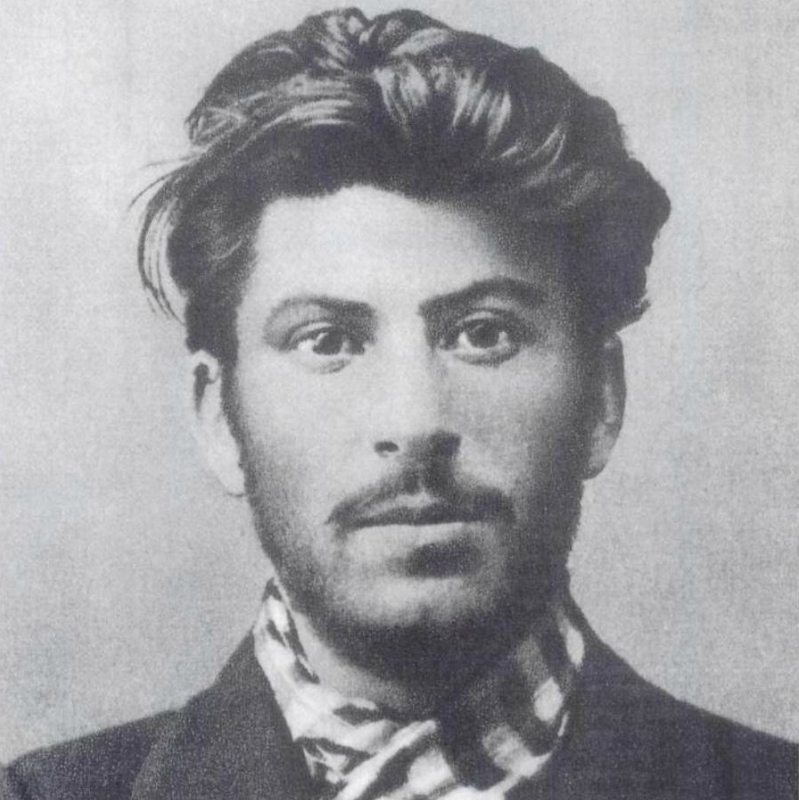
Young Stalin (1902)
As a young man, Joseph Dzhugashvili was racked with grief after his first wife died. He adopted the surname Stalin (meaning “man of steel”) and threw himself into work as a political activist. He was captured and exiled to Siberia in 1910, but Stalin continued revolutionary work—running the Bolshevik newspaper and helping Lenin escape the Tsar’s army and flee to safety in Finland.
Leading up to the Bolshevik Revolution of 1917, Stalin was a ruthless freedom fighter and bank robber. He had a reputation for executing even the most brutal and dangerous of operations fully and effectively. After the revolution, Stalin was named the chairman of the new government in 1922. When Vladimir Lenin died in 1924, Stalin adopted his responsibilities, consolidating and centralizing power. He effectively eliminated his opposition through systematic executions and assassinations.
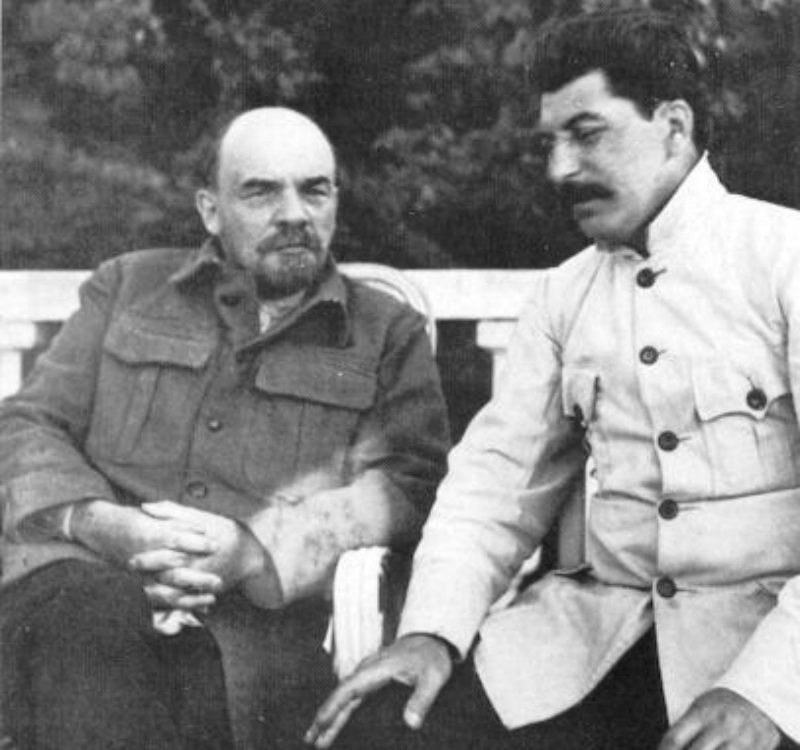
Stalin visiting the ailing Lenin at his dacha in Gorki.
In order to quickly transform Russia into an industrial nation, Stalin instituted harsh Gulag work camps, effectively imprisoning millions of people. He founded and enforced a system of collectivized farming with a shift toward industrialization. His poor economic policies resulted in famines that killed over 5 million people. Stalin considered these deaths a necessary loss in the name of social progress and continued his plan to make Russia the most productive country in the world.
Between 1934 and 1939, Stalin orchestrated “the Great Purge” (or the “Great Terror”), where as many as 2 million loosely-defined “enemies of the state” or “enemies of communism” were killed after staged mock trials. Over 3 million people were sent to prison camps. Stalin ordered the secret police to take into custody or execute over 75% of his officials and high-ranking government members. His paranoia reached dangerous proportions for the Russian people.
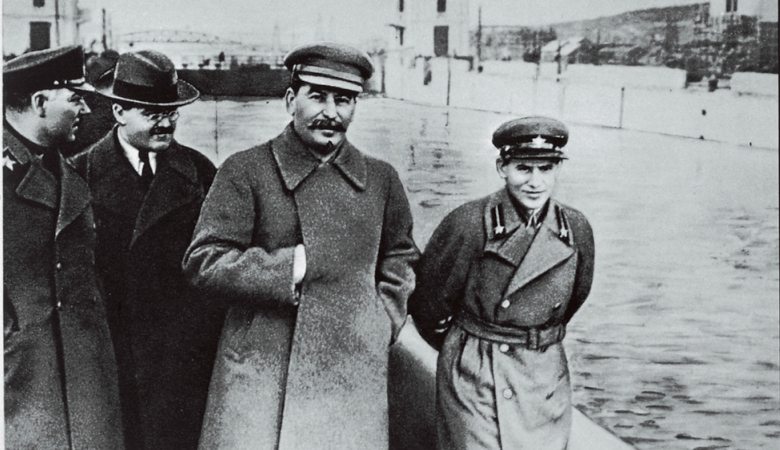
Voroshilov, Molotov, Stalin, with Nikolai Yezhov (a Soviet secret police official)
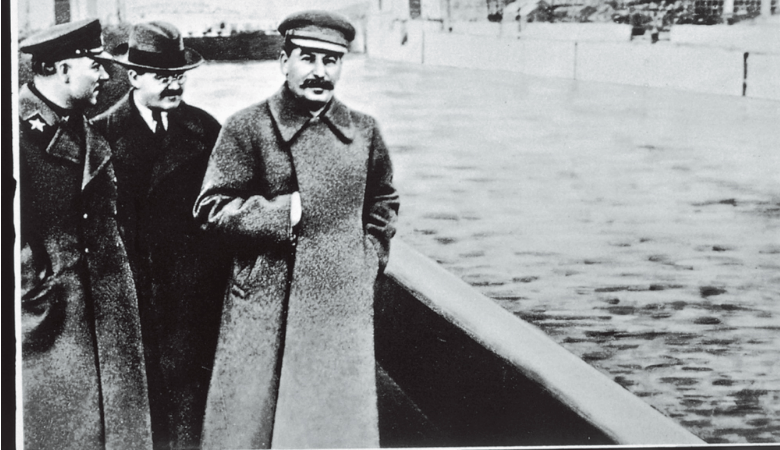
The Commissar Vanishes. After presiding over mass arrests and executions during the Great Purge, Yezhov became a victim of it himself as a result of the Great Purge.
After signing a nonaggression pact with Adolf Hitler during the Third Reich’s rise in Europe, Stalin refused to believe it when Hitler’s armies invaded in 1941. As Nazis continued toward Moscow, Stalin told his commanders not to take one step backward at Stalingrad. Although it costs Russia the lives of over a million men, they defeated and expelled the Nazis in 1943.
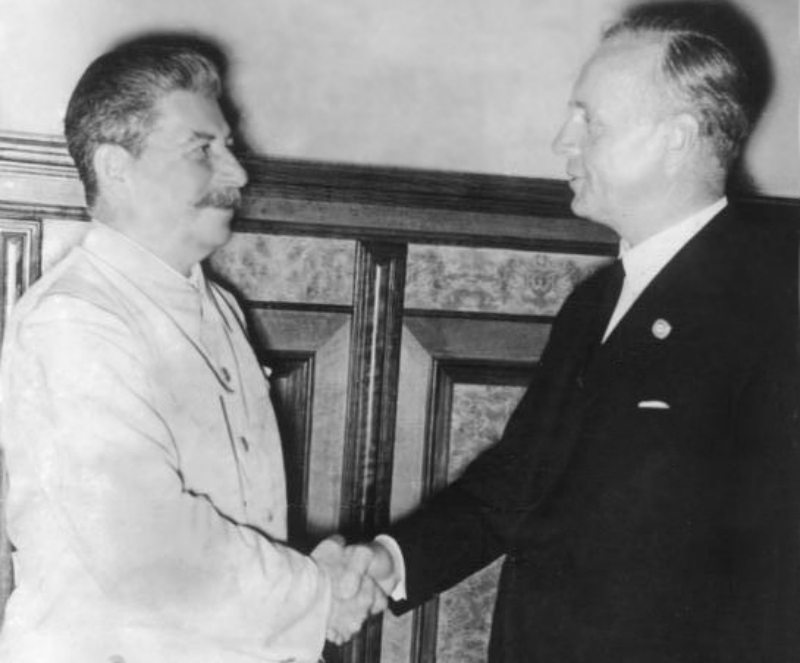
Stalin and Ribbentrop after the signature of the pact. August 23, 1939
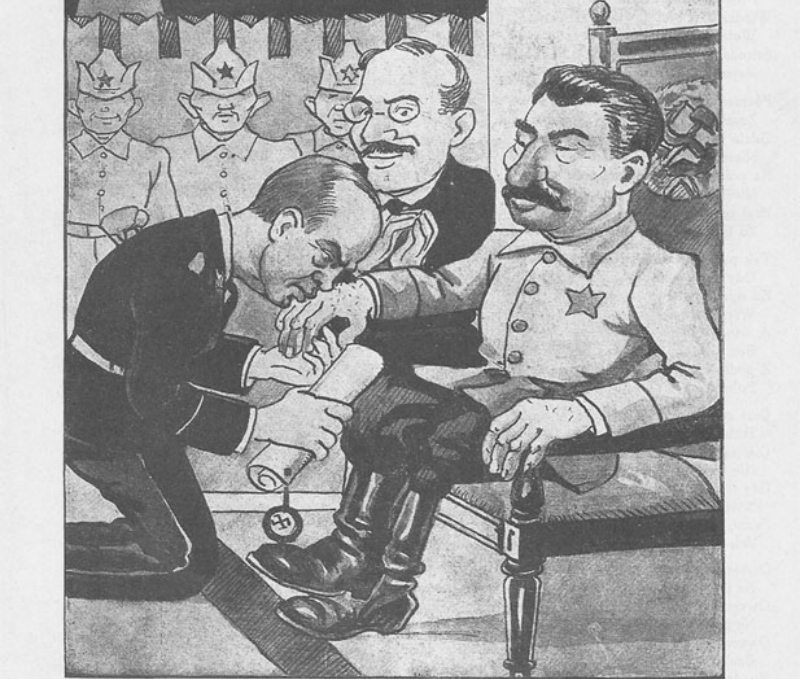
Mucha weekly, Warsaw – The Prussian Tribute in Moscow. Satire of the Ribbentrop-Molotov pact. Cartoon printed on September 8th 1939.
After pushing the Germans back to Berlin, Stalin demanded the territory become part of the Soviet Union at the war’s end. Although Allied forces attempted to reclaim the territory and repel the Soviets, Stalin issued the first Soviet atomic bomb test in 1949, starting the Cold War in earnest.
Over the next few years, Stalin’s continued purges of “enemies to communism” resulted in the deaths of perhaps another 500,000 people before he died in 1953.
Recommended books
“Dialectical and Historical Materialism” by Joseph Stalin
Share with friends

